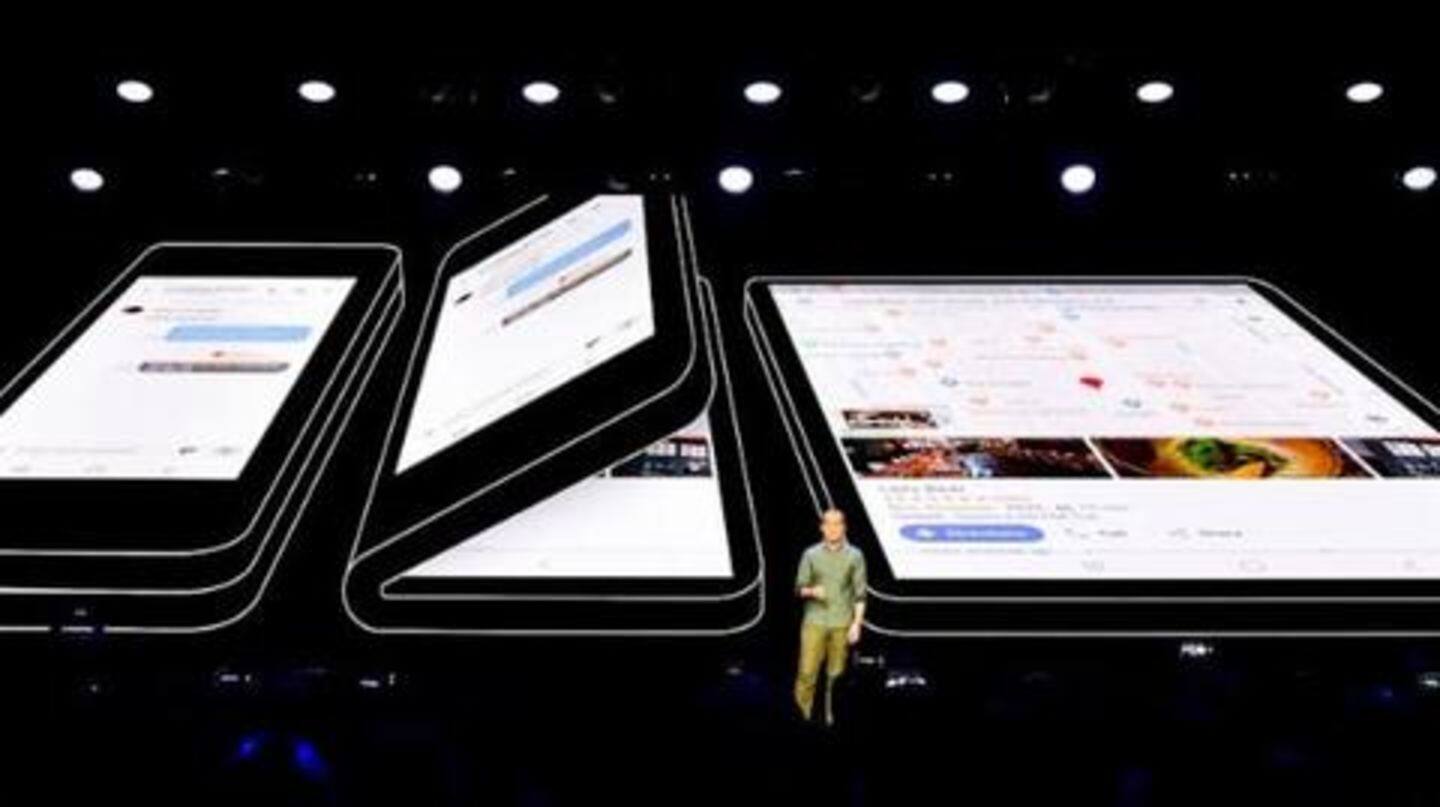
Samsung could be working on foldable slider phone, patents design
What's the story
Foldable smartphones are the future and Samsung knows it. While the South Korean giant is inching closer to the launch of its first foldable device, its engineering team already appears to be working on futuristic foldable phone designs. Just recently, we witnessed a dual-folding concept, and now, the company has patented another unique design, which even includes a slider mechanism. Here's all about it.
Patent details
A foldable phone with slide mechanism? Yes!
In a new USPTO patent, unearthed by LetsGoDigital, Samsung envisions a smartphone with a central hinge for folding the bottom half upwards. The phone looks like a normal Samsung device at first, thanks to an old-school home button and normal-looking metal frame. However, this frame also incorporates a rear portion, which can slid up a bit, just like Xiaomi's Mi Mix 3.
Slider function
The slider reveals front-facing camera, and a small display
The rear slider, as the patent suggests, reveals the front-facing camera and a small secondary display, shaped like a rectangle. The purpose of this display is not clear, but going by Samsung's way, it could be used to display information like time or notifications. Not to mention, the sliding mechanism is the only way that opens the bottom half of the phone for folding/unfolding.
Information
Secondary display will remain visible after unfolding
The render shown indicates the secondary display won't be covered when the bottom half of the device is folded over like a traditional flip phone. This way, the device might compensate for the lack of a display on the outer portion of the folding end.
Release
However, don't get your hopes high
The idea of mixing the foldable phone concept with the slider mechanism seems like a good bet, but there's no saying when or if Samsung will manufacture a device like this. It is just a patent at this stage, which means it could be built into a product or pushed toward the sidelines, just like many other technologies patented in the past.